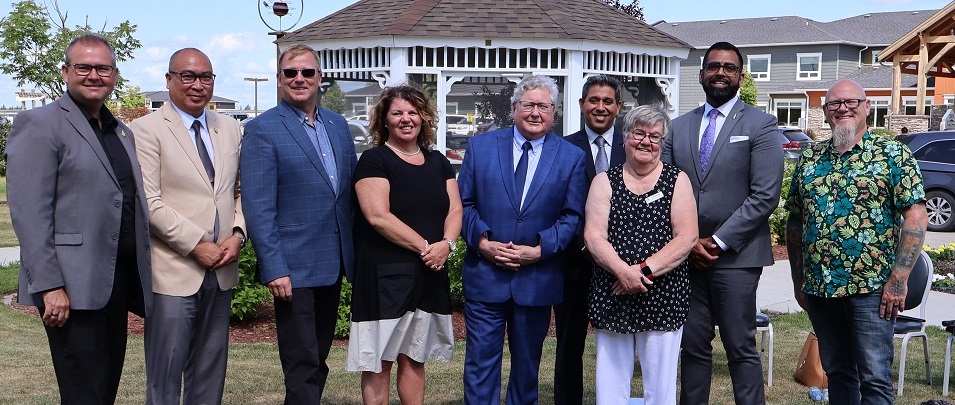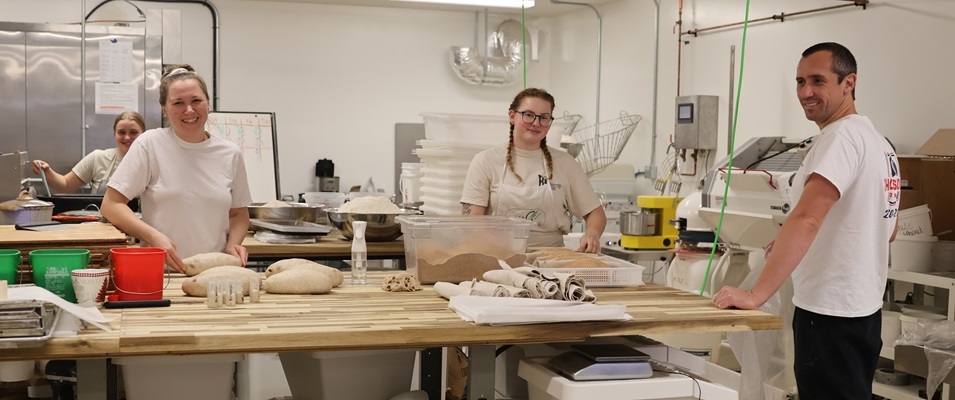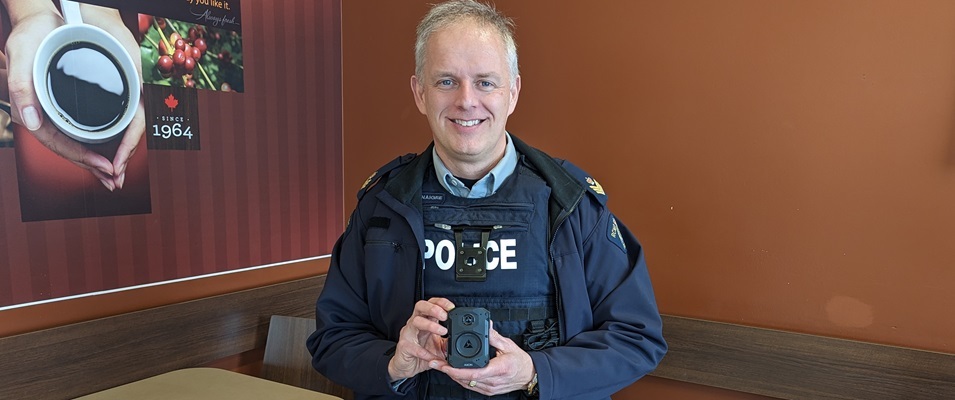
On July 7, dozens gathered on the lawn of the Niverville Heritage Centre’s aging-in-place campus for a new senior’s housing announcement from the provincial government.
According to Seniors and Long-term Care Minister Scott Johnston, the province will invest $15 million into the planning and design of six new personal care home (PCH) facilities across Manitoba.
This initiative, scheduled for Stonewall, Arborg, Lac du Bonnet, Oakbank, and Winnipeg, is expected to add 670 long-term care beds to the system.
The new PCHs will follow the model of those found in Niverville, Steinbach, and Carman. This model has been studied by other jurisdictions and recognized for its innovative approach to creating spaces that feel like home while providing a full continuum of care.
“Throughout our comprehensive consultations and engagement that helped shape our senior’s strategy, we’ve heard that Manitobans want accessible and affordable housing options close to home so that they can stay connected with their communities and their families for as long as they can,” Johnston said.
In addition, the province will pilot a second initiative called Community Supportive Living, which will act as a bridge for seniors who require more advanced care but are not yet ready for long-term care.
According to the Canadian Institute for Health Information, Manitoba has the highest percentage of long-term care residents who could have been cared for in the community had they had the appropriate supports.
In phase one, 105 supportive care units will be constructed in three health regions, including Southern Health-Sante Sud, totalling 288 units by the end of phase two.
“This new housing-with-supports program will provide safe, supportive care to seniors with chronic and complex needs in a home-like environment, preventing premature placement in a PCH,” Johnston said.
The province will use a standardized rate for accommodation and services and provide subsidy assistance to maintain affordability for all.
Finally on the government’s upcoming agenda is the introduction of 42 behavioural beds. These will be constructed in Brandon and Winkler and provide highly specialized care for seniors with complex mental health or behavioural needs.
Also speaking at Friday’s event was Connie Newman, director of the Manitoba Association of Senior Communities and member of the provincial senior strategy panel of experts.
“The World Health Organization and United Nations launched the Decade of Healthy Aging in 2021 and Manitoba is on the right track,” Newman said. “We’re following the outline of the WHO, which stated we need to change how we think, feel, and act towards age and aging.”
According to Newman, this includes helping communities develop ways to foster the abilities of their seniors while delivering person-centred integrative care at home.
Indicating to the backdrop of the Niverville’s Heritage Life PCH behind her, Sue Vovchuk of the Long-term and Continuing Care Association said she was pleased with the province’s decision to move on this aging-in-place model.
“I’ve had the good fortune of coming out to Niverville about three times in the last couple of months and I always leave here feeling so hopeful and so happy,” Vovchuk said. “It’s just so encouraging to see what is possible.”
Allowing seniors to live out all their years in their home community, she adds, will help them maintain the support networks of family, friends, and neighbours right to the end.
“This is essential for seniors to live a positive, productive and health life,” said Vovchuk. “In all journeys of care, it truly takes a village.”
Invaluable lessons were learned, she says, as a result of events that unfolded in personal care homes during the years of pandemic.
Niverville Mayor Myron Dyck remembers the early stages leading up to Niverville’s aging-in-place campus and the hard work and vision it took to get there.
“When I joined council in 2004, seniors were having to leave, even though they raised their families here, worked at and owned businesses here, coached kids teams, and volunteered in the churches and local fair,” Dyck says. “And then [they get sent] 60 to 80 miles away. It’s heartbreaking. So to see mayors and reeves and community members here today based on a model that we were fortunate enough to partner with the province on, it’s a great day and we’re very thankful for what we have here.”
Niverville’s model includes senior options from independent-living life lease units to assisted and supportive living options and finally the PCH. They’re all under one roof.
To build on this village-like model, the campus also provides social enterprise and retail space, medical and dental facilities, a restaurant, and a daycare facility.
Johnstone added that the seniors strategy, developed collaboratively by many partners, will pave the way for many more such announcements in the coming years.
“The seniors strategy is a living document,” said Johnstone. “We didn’t just put it together and put it on the shelf. It will continue to be implemented and enhanced. Why is that so important? Because we all know that our senior population is increasing significantly… People are living longer and therefore the demands that we have to meet are substantial.”




















